Every home at Potters’ Village in Uttam Nagar, West Delhi, is also a mini shop. Clay products, from gullaks and earthen pots and lamps to cooking and storage utensils, which the artisans chisel, are on display inside and outside the homes.
It could be an indication enough that the potters’ community is doing reasonably well in keeping their heritage alive at a time when several other handicrafts from the Rogan paintings of Gujarat to Pattachitra scrolls of Odisha are slowly fading, losing their grip in market. Many artisan communities face the harsh reality as their younger generations move away from the age-old skills and mechanised products or cheap imports often take over the market.
A potter at work inside his home in Delhi’s Kumhar Gram in Uttam Nagar
| Photo Credit:
Shashank Kumar Singh
The kumhars (potters) of Delhi are trying hard to remain an exception. Their wheels are not yet defunct and have helped generations learn and shape not just different types of vessels and products but have also kept together a vibrant community bound by heritage, resilience, and hope.
Kumhar village is a story of migration and reinvention. The families came from Alwar district of Rajasthan in the early 1960s and built homes on land given to them by the Gujjar landlords in Uttam Nagar. Equipped in their ancestral skills of pottery, the families gained business and confidence over the years.
Rajkumar Prajapati, a master potter, crafts gullaks (piggy banks), earthen pots and miniature temples round the year. During Diwali and festival times, the earthen lamps fetch more business. “My forefathers came here with nothing but hope that changed their fate. Their training is helping us to sell our goods all over India and also USA, UK, and Canada,” he says.
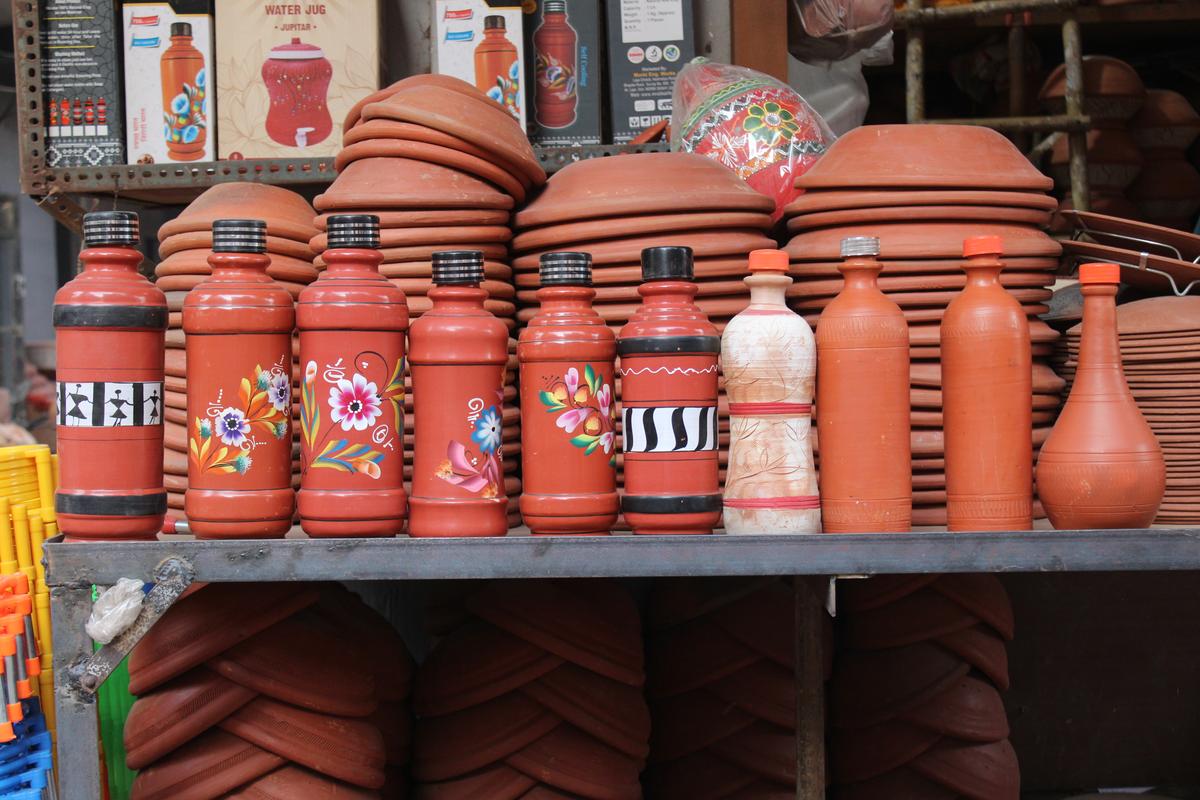
Kumhar Gram in Delhi’s Uttam Nagar
| Photo Credit:
Shashank Kumar Singh
To keep their name and fame going, the potters make it a point to participate in different national and international artisan festivals, such as the Taj Mahotsav in Agra, the Surajkund Crafts Mela, the Dastkar Haat and events that showcase India’s art and culture.
“Such events give us a stage to expose our art to the world and keep it relevant,” says Rajkumar. It helps to amplify our reach and gain recognition and appreciation for our eco-friendly products, he adds.
The platforms help them to connect with potential buyers and also inspire them to expand on the digital platforms to secure better returns for their craftsmanship.
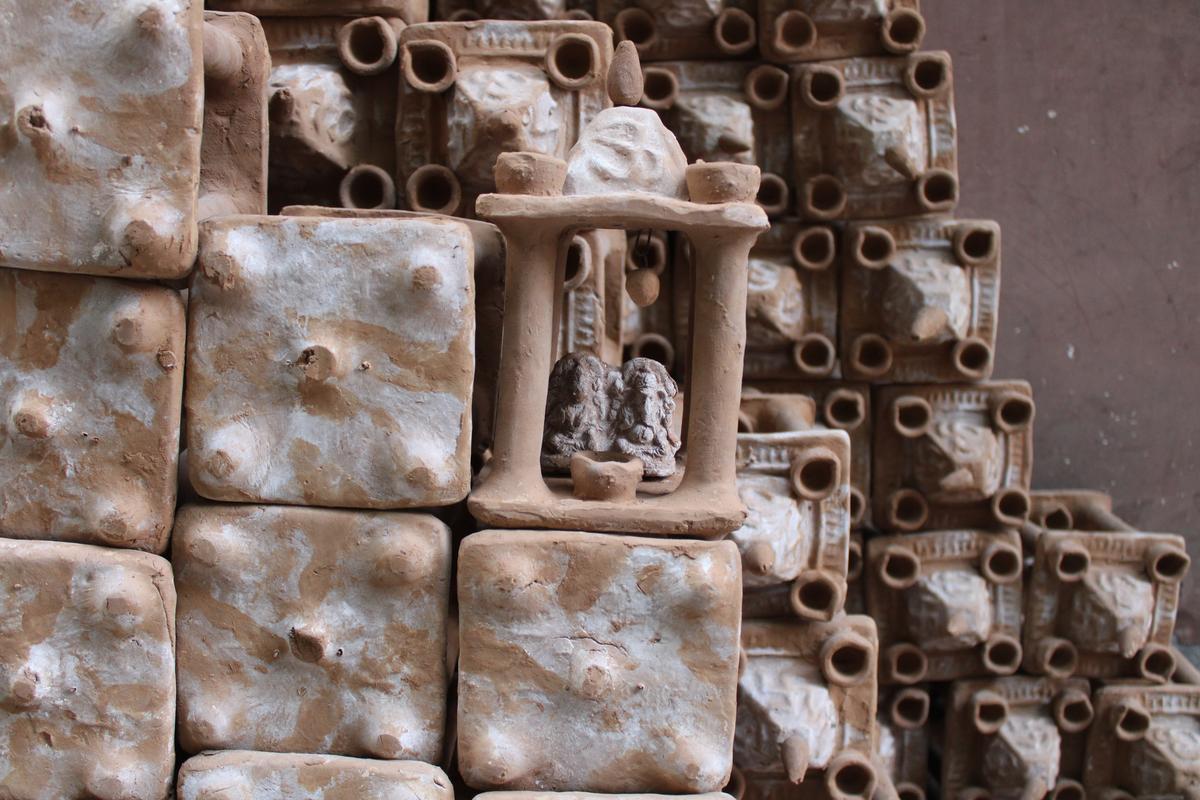
Kumhar Gram in Delhi’s Uttam Nagar
| Photo Credit:
Shashank Kumar Singh
For the artisans, pottery is not only a livelihood for sustenance but a legacy which is handed down to generations. “Even if my son chooses to do some other job, I will teach him this art for our legacy to continue,” says Rajkumar, father to five-year-old boy.
The story of potters’ village is also shaped by its women who get married into the potters’ families. “I learnt the craft after marriage and am teaching my daughter-in-law now,” says 65-year-old Laxmi Devi. “We work hard, but most of the profit goes to the middlemen who buy from us and sell in the market at a much higher cost,” she shares her concern, as the breadwinner of her family. The gullak she makes and sells for ₹50 goes for ₹200 in the open market.
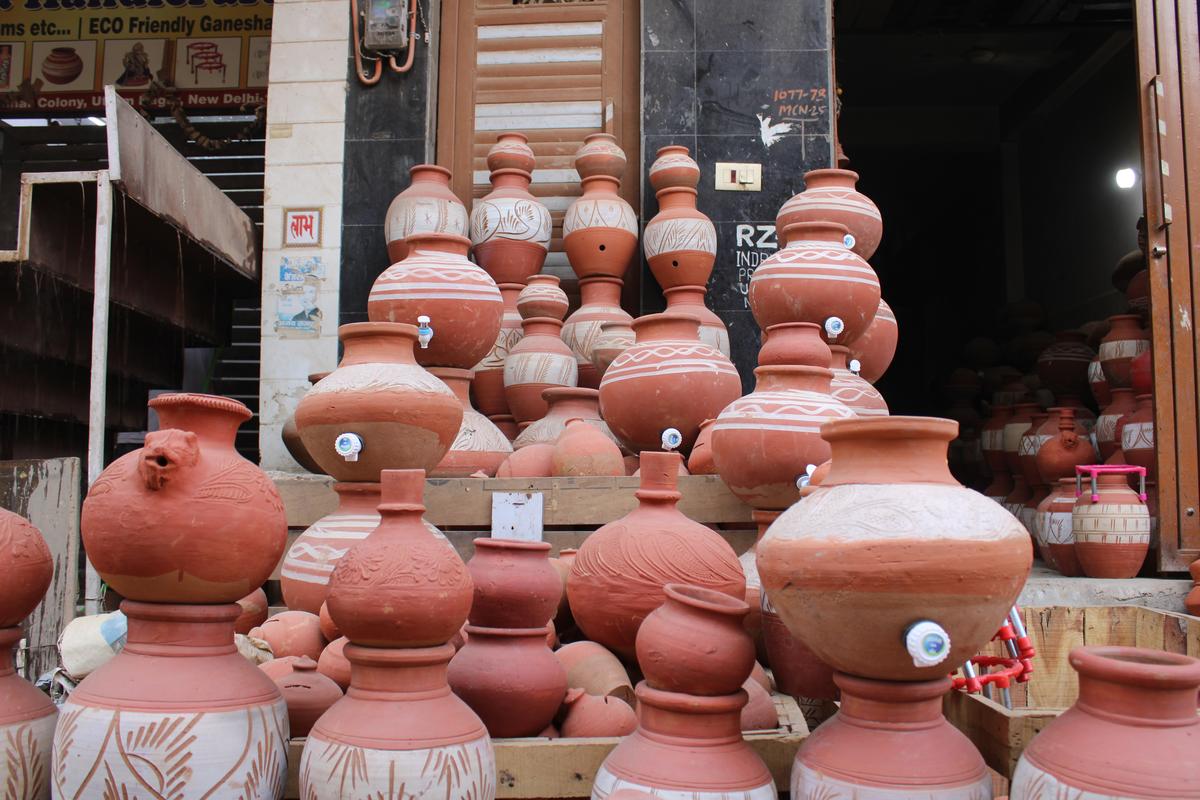
Kumhar Gram in Delhi’s Uttam Nagar
| Photo Credit:
Shashank Kumar Singh
The other threat to their income comes from the Cheap Chinese imports flooding the Indian market are threatening their income. “They are of inferior quality but people buy them for affordability and availability. It makes our lives difficult,” rues her daughter-in-law, Priya.
The community also has to cope with environment regulations threatening their traditional art. For years, potters have relied on traditional wood-fired kilns to fire their clay products, a method that lends unique texture, shine, durability and quality to their products. But the procedure generates smoke and pollution.
The National Green Tribunal (NGT) and local authorities impose ban on these kilns from time to time to curb air pollution in Delhi. “We understand the need to protect the environment but switching to gas or electric kilns is expensive; majority of us cannot afford it,” says Sangeeta Prajapati.
Without any financial support or clear guidance from the administration, the artisans face a painful choice that casts a shadow over their craft. “We don’t have any associations or unions to represent our issue. We as a community help each other to grow and sometimes send collective petitions to the government,” she adds.
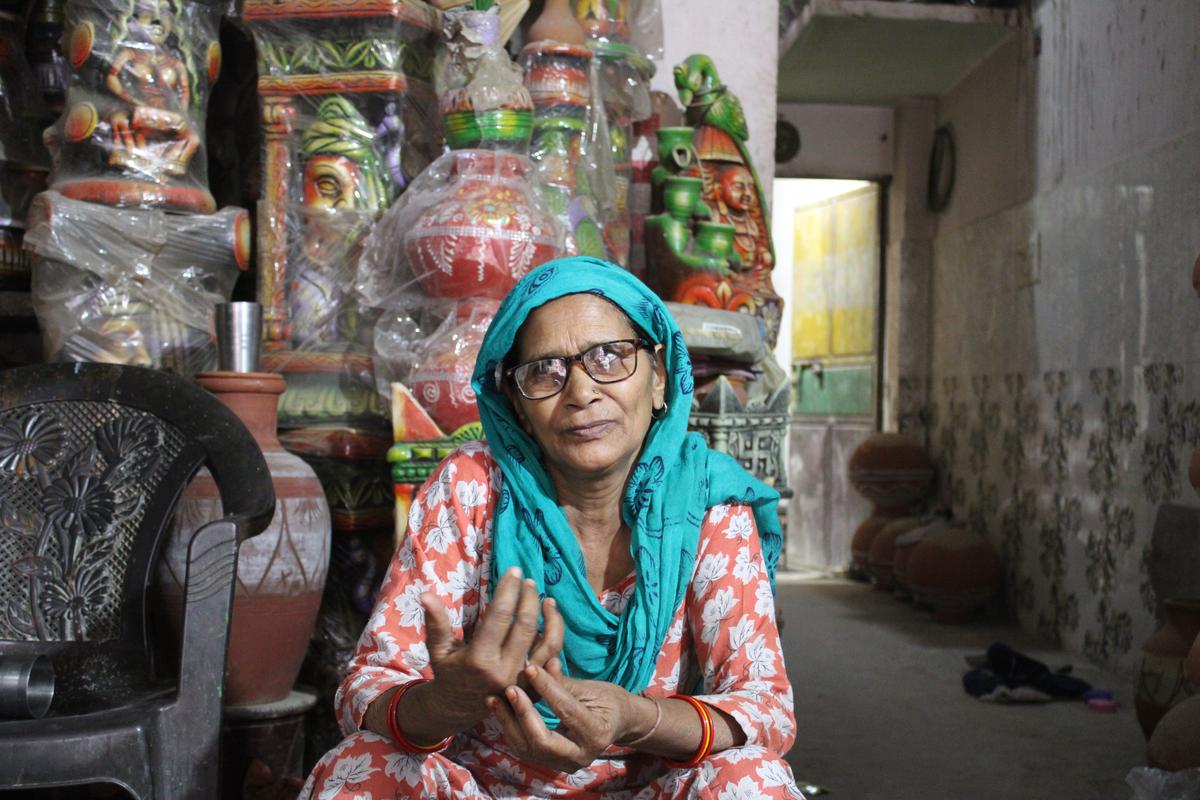
Women join the craft after marriage
| Photo Credit:
Shashank Kumar Singh
Under the National Handicraft Development Programme, there are a few schemes to develop clusters with world-class infrastructure and technology to boost production and exports. “I hear there are policies to develop our community but there is no concrete information or communication,” says Ganesh Prajapati, 45.
The potters want their children to learn and be equipped in using digital tools to scale their craft. “Our sustainable products should reach every Indian household at fair prices,” Priya wishes.
Despite the odds, the kumhars have shown resilience to keep going with their traditional craft. “We wish to break free from the stranglehold of middlemen and expand our own businesses for better profit,” says Rajkumar.
Their struggle is a reminder that preserving heritage requires more than skills and memories. “Equitable policies, conscious consumerism, and acknowledgement of the handcrafted skills are important. Or else, the age-old stories waiting to be told in every handcrafted artefact will get buried,” he adds.
Shashank Kumar Singh
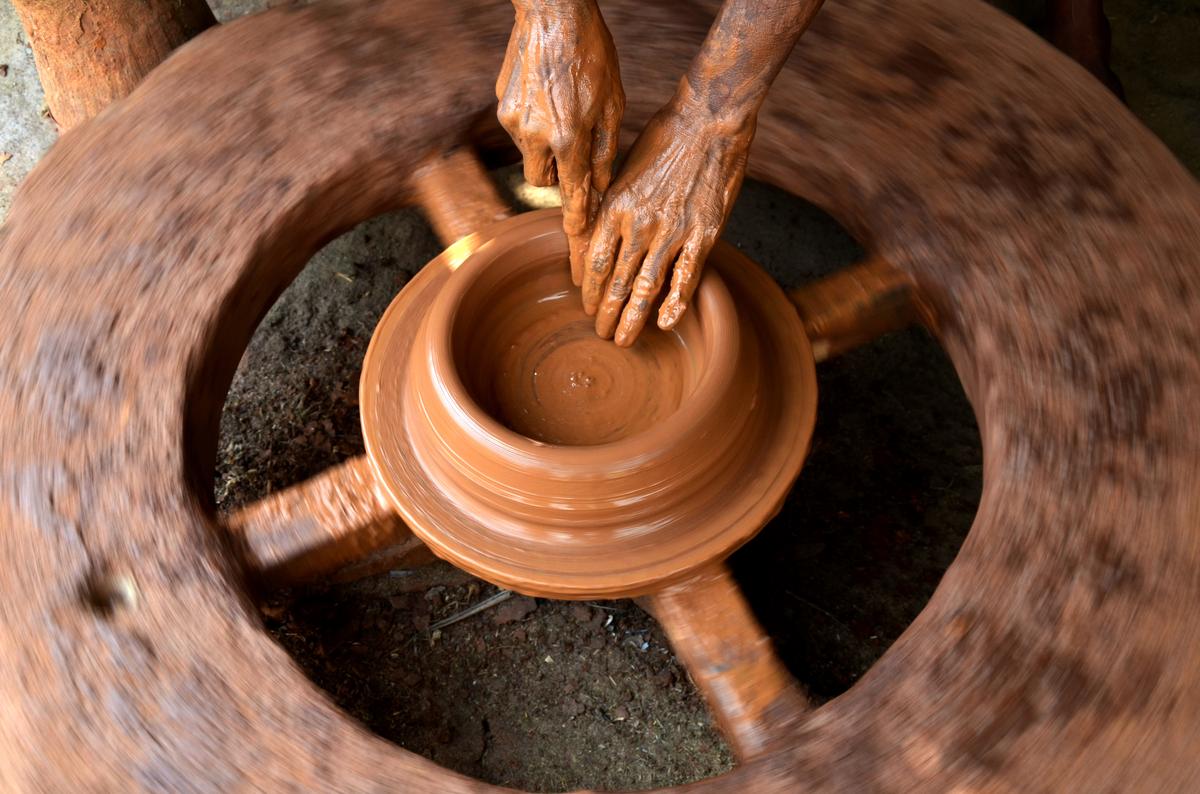
A potter on the wheel
| Photo Credit:
RAJU V
Published – May 22, 2025 05:58 pm IST